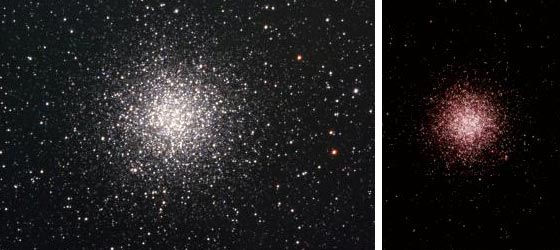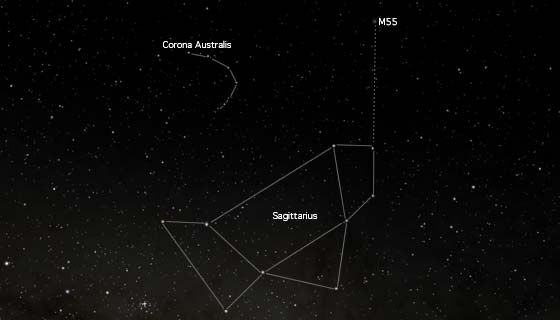
M55Here's some basic information about M55. Its a class XI globular cluster in Sagittarius, also know as NGC 6809. Position is right ascension 19h 40m, declination -30° 58m. Distance is 17300 light years and apparent size is 19 minutes, giving a true diameter of about 100 light years. Visual magnitude is 6.3 (true brightness is about 100,000 times the Sun). M55 is quite large, almost as big as the full Moon (although only one third the size of the biggest globular, Omega Centauri) and is easily visible in binoculars. It was discovered in 1751 by Abbe Nicholas Louis de la Caille. Being 30° south, it can be difficult to observe from the northern hemisphere. 
To find M55 you need find the constellation Sagittarius which is a quite easy "teapot" shape nead the bright constellation Scorpius. Also note the distinctive crescent shape of the small, dim constellation Corona Australis (the brightest star is only magnitude 4) which almost "points to" M55. M55 is in a rather empty area away from bright stars so you will need to follow the line from Sigma (magnitude 2) through Tau (magnitude 3) and continue about 8° (around one binocular field) until you see M55. It sounds awkward, but because M55 is quite bright its not too hard to find. |
![[Up]](../XuShared/Up2B.jpeg)